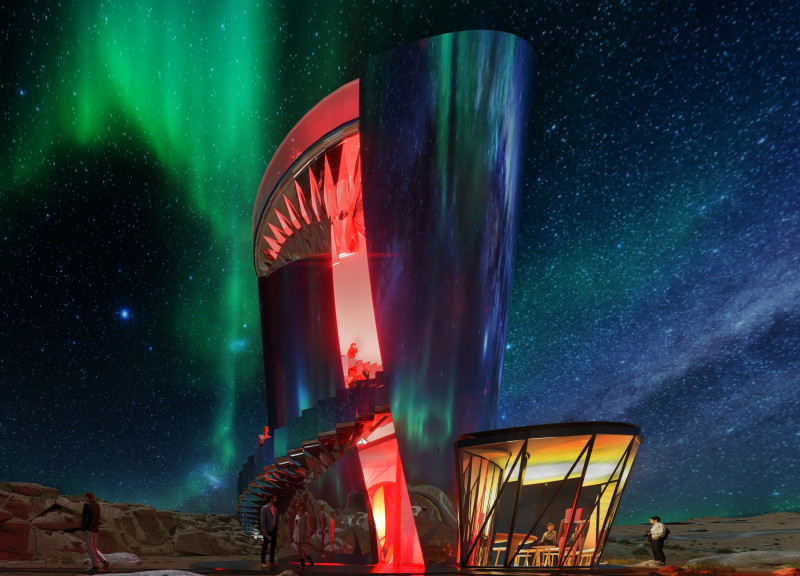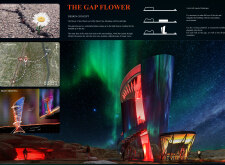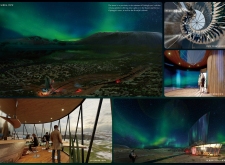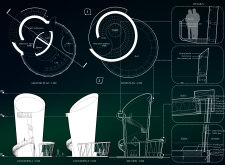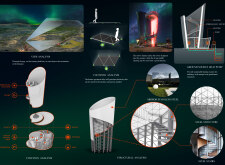5 key facts about this project
"The Gap Flower" is a structure located near the entrance of Karlagjá cave. It serves as a visitor center and embodies the relationship between the natural landscape and built forms. Designed to represent a flower rising from an icy environment, the building reflects the contrasting elements of fire and ice that characterize the region. The project enhances public interaction with the area's unique geological features.
Design Concept
The design integrates thoughtfully with the surrounding landscape. The outer surface is reflective, allowing it to blend in with the environment and minimize visual disturbance. A central skylight plays a vital role in the design by bringing natural light into the building, creating a lively interaction of light and shadow that enriches the experience for visitors.
Program and Functionality
The facility includes essential amenities for visitors. Features such as a waiting area, an information stand, storage rooms, toilets, a café, an office, and an observation platform make the space functional. The observation platform is particularly notable, extending outward to offer expansive views of the nearby geological fissures and mountains, encouraging visitors to engage with the surrounding natural beauty.
Sustainability Features
Sustainability is a key aspect of the design. Kinetic pavement tiles are used to generate electricity based on foot traffic, demonstrating an efficient way to harness energy within the building. The design also incorporates a ground source heat pump, making use of local geothermal resources to provide sustainable heating.
Material Selection
Materials used in the project include mirror stainless steel and a sturdy steel structure. These choices not only support the structural needs but also enhance the overall appearance of the building. The reflective quality of the stainless steel strengthens the connection between the structure and its natural setting, aligning with the concept of integration into the landscape.
The upper levels provide visitors with a chance to experience the interaction of light and form, creating an inviting space that encourages exploration of the area's distinctive qualities.


